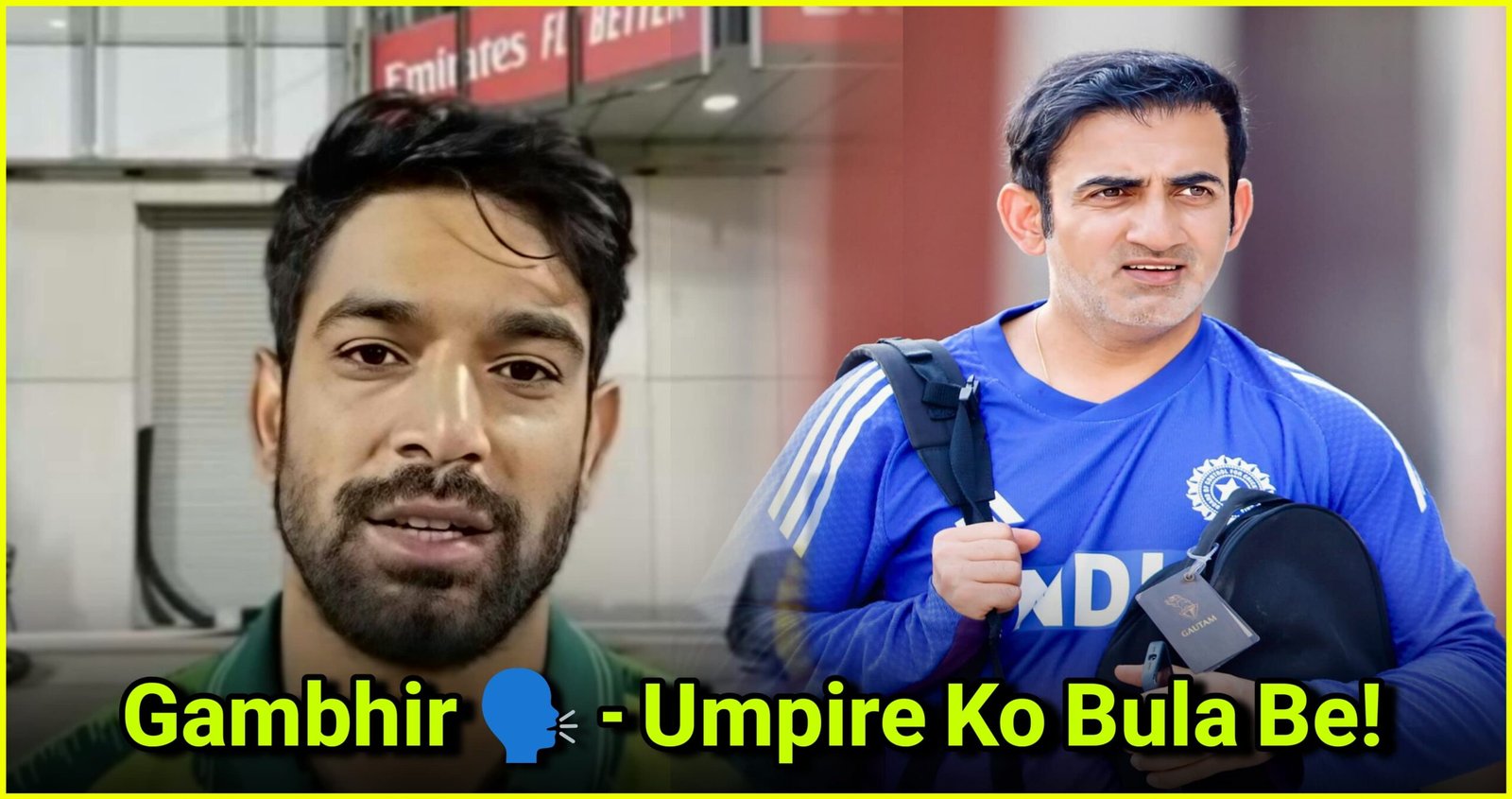Rising stars took center stage as India U19 faced England U19 in a contest packed with raw talent and nerve. Young players handled the pressure, turning every ball and run into a story of its own. Fans were glued to their screens, following each change in momentum, each push for victory.
The stakes ran high as both teams chased glory, hungry for a series win. Highlights, big moments, and live updates kept everyone on edge, painting a clear picture of youth cricket’s future. For those following the score, every boundary and wicket told the story of ambition and skill that could shape tomorrow’s cricket heroes.
Catch live updates and insights on every turning point as this remarkable series continues to shine with promise.
Watch live action here: Watch IND vs ENG U19 Live
Match Summary: A Battle Brimming with Talent
Bat and ball danced to a new tune at New Road, Worcester as India U19 and England U19 delivered a youth ODI classic fans will remember for years. The contest brimmed with fresh energy, nerves on display but met with head-turning talent at every turn.
Players wore their emotions for all to see. Each run felt like a shout of intent, every wicket a crackle of raw ambition. As tension built, it wasn’t just skill but grit and calmness under pressure that separated the stars from the supporting cast. Here’s how the match unfolded, highlighting the artistry and fight from both teams.
India’s Explosive Batting Display: Vaibhav Suryavanshi’s Record 143 off 78
![IND vs ENG U19 Live Score [Updated]: India Clinch Series with Suryavanshi’s Record-Breaking Century 1 A group of young males engaged in a cricket match outdoors on a sunny day.](https://images.pexels.com/photos/19303238/pexels-photo-19303238.jpeg?auto=compress&cs=tinysrgb&dpr=2&h=650&w=940)
India’s top order attacked with unwavering purpose, but one name grabbed the spotlight and refused to let go: Vaibhav Suryavanshi.
His unbeaten 143 off 78 balls wasn’t just a statistic, it was pure fireworks. Suryavanshi played as if fueled by adrenaline, sending 13 boundaries racing to the fence and launching 10 sixes that sent fielders chasing shadows.
- Fastest youth ODI century ever: just 52 balls
- Second-fastest fifty in youth ODIs: 20 balls
- Strike rate: 183.33, one of the highest in U19 internationals
- Broke the all-time record for sixes in a youth ODI
Suryavanshi’s approach jolted the crowd to its feet. He mixed power with timing, finding gaps with whip-crack pulls and inside-out sweeps. Every swing seemed tuned to release built-up nerves, showing other young cricketers how aggression and patience can live together at the crease.
Backing him up, Vihaan Malhotra turned anchor into aggressor, racking up 129 from 121 deliveries. Malhotra’s innings was less flashy but just as vital—he rotated strike, played the waiting game, and ensured Suryavanshi always had company at the other end. India’s total surged to an imposing 363, leaving England with a mountain to climb.
England’s Chase: Valiant, but Just Out of Reach
England’s reply began with hope and a sense of purpose. They matched India’s fire with determination, straightening every back and tightening grips on the bat as the target loomed.
Rocky Flintoff rose above the pressure with a run-a-ball hundred, striking 100 from 92 balls in a display that oozed calm and technical class. Flintoff trusted his footwork, flicked and drove through gaps, and built healthy partnerships that kept England in the hunt.
- Flintoff’s partnerships with the middle order—especially the gritty 90-run stand for the fifth wicket—kept English hopes burning.
- The run rate never strayed far from the ask, yet each Indian wicket felt heavier as the overs melted away.
- England fell short at 308, with important wickets from Naman Pushpak (3 wickets) and Ambrish R tipping the balance in India’s favor.
As the final overs ticked by, tension shrouded the ground. England’s lower order faced bouncers and darting yorkers, the weight of expectation on every swing. In the end, India’s young bowlers held their nerve and channeled mental resilience, sealing a tight 55-run win and the series with it.
This match showed not only raw numbers on a scoreboard but the feeling of playing for something bigger than yourself, with every young star battling both the opposition and their own nerves. That’s the spirit youth cricket promises and, on this day, delivered in full.
Star Performances: Records and Rising Names
When the spotlight fell on New Road, it illuminated not just a contest, but a showcase of cricket’s next superstars. This match wasn’t just about the result—it was about record books being rewritten and reputations forged on fresh turf. Some players played with the composure of seasoned pros, others swung the bat as if they’d never known fear. Here’s a look at the young names who turned heads and broke youth cricket records on a day that promises much for the future.
Vaibhav Suryavanshi: A Century for the Ages
![IND vs ENG U19 Live Score [Updated]: India Clinch Series with Suryavanshi’s Record-Breaking Century 2 Young cricketer in action on a sunny day at a field in Gahunje, MH, India.](https://images.pexels.com/photos/13509631/pexels-photo-13509631.jpeg?auto=compress&cs=tinysrgb&dpr=2&h=650&w=940)
Vaibhav Suryavanshi didn’t just score runs, he rewrote what is possible for a teenager with a bat. At just 14 years old, Suryavanshi hammered a 52-ball century against England U19—a feat that now stands as the fastest hundred in youth ODIs. He shattered long-standing records, scoring 143 off 78 balls, hitting 10 sixes and 13 boundaries, and finishing with a breathless strike rate of 183.
Why does Suryavanshi’s name matter so much now?
- He’s the youngest player to ever notch a century in youth ODIs, crushing a mark set by players three or four years older.
- His approach is fearless, with clean hitting and remarkable poise at the crease. Watching him, you see a blend of technical ability and bold stroke play rarely seen in someone so young.
- Suryavanshi’s aggressive style has sparked talk in cricket circles—not just in India, but worldwide—as the future face of a more attacking brand of youth cricket.
- His record comes on top of consistent scores (86, 48, 45) on this England tour, proving this was no one-off.
Suryavanshi plays his game like he’s flipping a switch—one minute patient, the next explosive, adapting to the pressure with the maturity of someone much older. He’s already made waves in IPL cricket, smashing a 101 off just 38 balls for Rajasthan Royals. This knack for rapid scoring might just change the way young cricketers approach their own games. When you watch Suryavanshi, you don’t just see a player, you see a glimpse of the future.
Rocky Flintoff and Thomas Rew: Standing Tall for England
England’s reply was packed with grit, and a fair share of pride belonged to Rocky Flintoff and Thomas Rew. These two didn’t just build partnerships, they stood firm as symbols of hope when the odds turned against their team.
Rocky Flintoff, carrying the weighty surname of his legendary father, Andrew, carved out his own story. In the crucible of a tough chase, he reached a gutsy 107—blending safety and power, absorbing pressure, and keeping England in touching distance. Flintoff’s hundred was more than a number, it was a masterclass in how to anchor an innings while searching for scoring options.
Meanwhile, Thomas Rew delivered a record-breaking act of his own not long before. He became the fastest England U19 player to reach a one-day century, crashing 131 off just 89 balls earlier in the series. Against India, his resilience and technique brought England back from difficult spots:
- Rew and Flintoff’s 123-run stand steadied the innings, showcasing calmness under heavy fire.
- Rew’s ability to innovate—pulls, reverses, sixes over long-on—meant India’s bowlers couldn’t find rhythm against him.
- Even when wickets tumbled, Rew kept his head, setting the tone for others in England’s lineup.
Both Flintoff and Rew have grown into leadership roles, not just by racking up runs, but by refusing to be cowed when things get tough. Their performances mean more than a scorecard can show: they give England a blueprint for future success and act as proof that the next generation is ready to face whatever comes.
These names aren’t just written in the match summary—they’re now etched in youth cricket history. Each innings told a story of courage, quick thinking, and the kind of raw hunger that marks future stars.
Bowling Strategies and Fielding Moves
Disciplined bowling spells and sharp fielding proved just as important as any big hundred in the IND vs ENG U19 clash. When nerves stretched tight and the run chase heated up, it wasn’t just pace and spin that stood in England’s way—it was India’s smart field placements and split-second anticipation in the outfield. Fielding drills, clever bowling variations, and team trust showed up in nearly every over, shaping the match’s biggest turning points.
Sebastian Morgan and Jack Home: Delivering Under Pressure
![IND vs ENG U19 Live Score [Updated]: India Clinch Series with Suryavanshi’s Record-Breaking Century 3 Young cricketers playing with focus and skill on a sunny outdoor field.](https://images.pexels.com/photos/3628912/pexels-photo-3628912.jpeg?auto=compress&cs=tinysrgb&dpr=2&h=650&w=940)
Sebastian Morgan and Jack Home stepped up when India needed control and breakthroughs. Morgan’s line and length kept England’s batters tied down, working with every inch of a worn Worcester pitch. He didn’t just bowl dot balls—he attacked the stumps, changed his pace, and dared the batters to take a risk against him.
Jack Home, on the other hand, thrived on pressure. When England tried to break free during the middle overs, Home slowed them down with canny variations. His slower ball fooled the well-set batters, drawing a skyed shot that led to the biggest wicket of England’s chase.
What made their spells stand out?
- Consistent accuracy: Few free hits, fewer boundary balls.
- Mixing pace and length: Forced mistakes from even the most set English batsmen.
- Bowling to the field: Every ball had a plan—sometimes attacking the stumps, other times aiming wide for a squeeze.
Their spells weren’t eye-catching because of raw speed or wild turn. Instead, they built pressure one over at a time, turning the run chase into a mountain for England. Morgan’s early breakthroughs and Home’s late wickets meant England’s best hitters never looked settled for long, putting India in the driver’s seat as the overs ticked down.
Key Dismissals and Fielding Brilliance
The difference between winning and losing often comes down to moments—snapped up catches, breathless run outs, or one desperate dive that saves four. The fielding unit, tuned by tireless practice, delivered some crowd-raising action that changed the match’s course.
A few moments stood above the rest:
- Flying slip catch: Early in England’s chase, a sharp chance flew to second slip. The fielder didn’t wait, diving with both hands outstretched and coming up grinning, ball lodged safely. That one moment dented England’s confidence and gave India the first crack in the chase.
- Lightning run out: In the 29th over, England’s set batter called for a risky single. The throw from point came in low, quick, and flat—direct hit. That run out not only sent the batter back, but also left England’s middle order exposed.
- Boundary save: With only inches to spare, an Indian fielder sprinted full tilt at deep midwicket, sliding on the turf and flicking the ball back before it crossed the rope. Instead of a certain four, England got just two, reminding every batter that nothing would come easy in the deep.
These plays weren’t born out of luck or hope. They came from drills that focused on:
- Fast reactions and athletic movement
- Chase-and-throw practice under time pressure
- Working in every position, from close-in to deep outfield
Every throw, every shout, every dive illustrated why fielding is as much about mindset as muscle. When young cricketers ask what separates a good team from a great one, they should look at these kinds of moments. India’s fielders never let the game drift, keeping pressure on every ball and turning half-chances into highlights.
Smart field settings by the captain also paid off. Constant reshuffling, taking cues from the bowler and batter’s plans, plugged gaps and forced high-risk strokes. The team used their knowledge of England’s hitters—placing fielders in the ring to cut off ones and blocking the square boundaries with fast movers.
A match like this is a reminder that cricket isn’t only about the stars with bat or ball in hand. Sometimes, it’s a pair of safe hands, a sharp mind, and the hunger to turn a chance into a turning point. These were the moments that turned India’s total from a “good score” into a winning one.
Trends and Tactics in U19 Cricket: What We’re Seeing
Cricket at the Under-19 level is moving fast. Today’s young players aren’t just learning the old basics—they’re embracing new tools, bold ideas, and data-driven tactics that make matches like IND vs ENG U19 thrilling on every ball. We’re seeing a wave of change that’s about more than just technique. Coaches and academies talk about risk-taking, smart planning, and giving youth cricketers the confidence to bat big and bowl with fresh tricks. Here’s how those trends look on the ground.
Aggressive Batting and Fast Scoring: Boundary Percentage, Bold Strokes, and Calculated Risks
![IND vs ENG U19 Live Score [Updated]: India Clinch Series with Suryavanshi’s Record-Breaking Century 4 Cricketer in action performing a sweep shot on a sunny outdoor pitch.](https://images.pexels.com/photos/3800517/pexels-photo-3800517.jpeg?auto=compress&cs=tinysrgb&dpr=2&h=650&w=940)
Scoreboards are lighting up like never before in youth cricket. Across recent tournaments, aggressive batting is the norm, not the exception. There’s a clear focus on boundary percentage—the share of runs coming from fours and sixes—rather than just occupation of the crease.
Young batters are:
- Aiming to hit at least two boundaries per over during powerplays.
- Raising their strike rates above 100, sometimes even 120, especially in ODIs and T20s.
- Using innovative footwork and angles, like “pick-up” sweeps and ramp shots, to find gaps.
In top youth games, coaches now encourage players to back their strengths and embrace pressure situations early. This can mean launching over the infield in the third or fourth over, rather than waiting until the twentieth.
Players practice “scenario hitting”—batting with set goals for runs per over and boundary targets in training. This method, fueled by video analysis and instant feedback, is developing natural power-hitters who no longer fear failure.
The result at U19 level?
- Young players take calculated risks with confidence.
- Big individual scores, like Suryavanshi’s hundred, are celebrated as blueprints for others.
- Teams view 300+ as par, adjusting batting orders to get their most explosive players at the top.
Instinct and muscle memory go hand in hand, making today’s U19 batters look ready for the big stage—and sometimes even outshining seasoned pros.
Smart Bowling Variations and Strategic Field Placements
The bowling side of youth cricket has changed just as much. It’s no longer about charging in and hoping a good ball does the trick. Success is built on variety, data, and always keeping the batters guessing.
Bowlers now mix:
- Seam and swing in the early overs, then switch to cutters and back-of-the-hand slower balls as the ball softens.
- Off-pace deliveries and wrist spin to break rhythm, especially to new batters.
- Yorkers and wide lines at the death, aiming for mis-hits rather than just dot balls.
Teams encourage bowlers to read the game—watching a batter’s grip, feet, and intent before the ball even leaves the hand. On top of that, captaincy at this level has become more hands-on. Captains shift fielders ball by ball, respond to match-ups, and use pre-planned field placements to trap big hitters.
Key fielding tactics include:
- Placing dynamic fielders at backward point and extra cover—where quick reactions can turn singles into dot balls.
- Packing the leg-side boundary to protect against ramp shots and sweeps that have become common.
- Using “ring traps” during middle overs to keep set batsmen from picking up easy twos.
The new model is all about teamwork and anticipation. Bowlers trust their fielders to back them up, while fielders train for reflex catches, rapid pick-and-throws, and boundary-saving dives. The goal is simple—deny the batters momentum, squeeze the scoring, and force mistakes under pressure.
Youth cricket in 2025 is giving us a taste of the future right now—a game where boundaries are chased with intent, smart bowlers play the tricks, and sharp fielders close every gap. The result? Matches that are as much about quick thinking as raw skill, where every ball can flip the story.
Conclusion
This series wasn’t just a scorecard, it was a statement about the future of cricket. India’s win over England U19 highlighted a deep well of youth talent, where players like Vaibhav Suryavanshi grabbed their moment and turned it into something lasting. The match also gave England future leaders to rally around, with Rocky Flintoff and Thomas Rew showing they are ready for the spotlight.
Every over revealed new faces with the drive and skill to shape the next era. If this is what the youth level delivers, the horizon of cricket has never looked brighter. Thanks for following along—share your thoughts about which young name you think will shine next.









